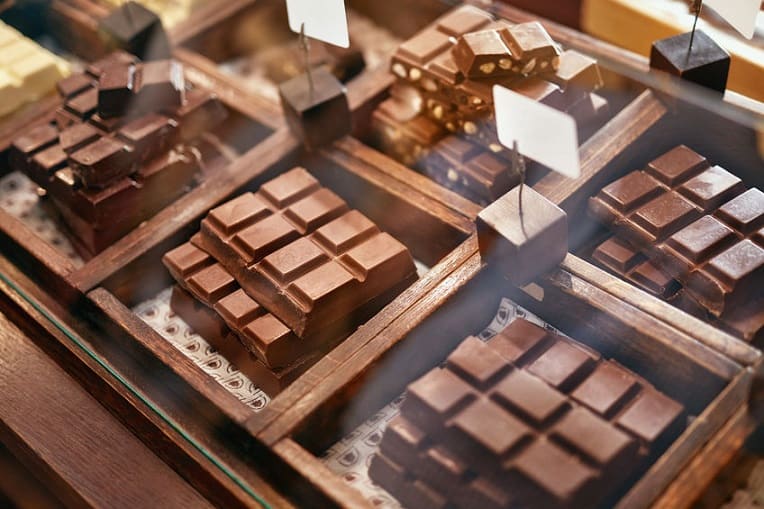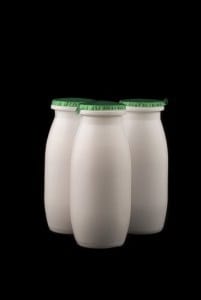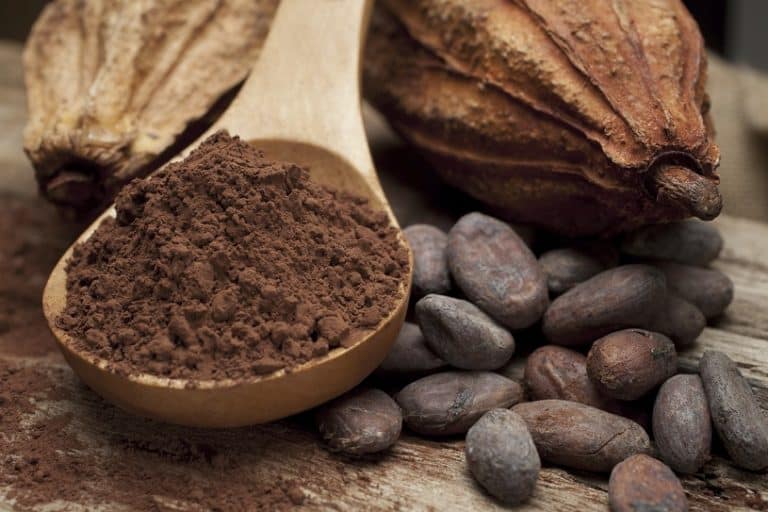 Generally, it isn’t a huge tragedy that very few studies have tested diet and its endlessly theorised connection to acne.
Generally, it isn’t a huge tragedy that very few studies have tested diet and its endlessly theorised connection to acne.
In fact, if no more studies were ever conducted, I wouldn’t be slightly concerned for the future of acne-covered teenagers all over the world. Why? Because most of the connections are easy to deduce through common sense, and indirect biological facts about human skin.
For example, vitamin A is proven to lower oil production by binding to receptors in the sebaceous glands that manufacture it, so much so that synthetic vitamin A forms the base of the last resort acne drug accutane. Vitamin A is found in eggs, cheese and sweet potatoes.
Sugar is proven to accelerate dead skin cell turnover, and it’s everywhere. Vitamin C is found in strawberries and is accepted as key to manufacturing collagen.
We have all the information we need already. It’s just scattered around in various locations, hard to bring together…
…but that said, we’re hardly complaining when the mysterious gears of science do churn out studies on diet and acne for once.
The good news is that there’s slightly more than 10 years ago. It’s hardly strengthened into a flood, but one fresh study seems to appear approximately every six months nowadays. So here’s the latest one…
The study
This wasn’t a straightforward 6 week experiment where they force fed people cheddar cheese and waited until their acne got worse. It was questionnaire based, and tested 32,000 volunteers from the long-term French NutriNet-Santé study which started in May 2009 and includes 170,000 people overall.
NutriNet-Santé has been drawn upon for heart attack studies, diabetes studies, and cancer studies alike. It’s a well established, trusted data pool, so we’re already piling on the reliability points.
Instead of being summoned to their tiny local dermatology clinic and getting lost in an alleyway looking for it, this was an online survey. Sitting on a computer chair, each participant logged onto the website (which may or may not have crashed repeatedly), and filled in a form answering 11 question on skin quality, starting in November 2019.
They recorded their food consumption from midnight to midnight, both at day 0 and 6 months into the study: cheese, sugar, meat, chocolate. 7000 volunteers were excluded for reliability, leaving us with a hefty 25,000 French adults. The scientists didn’t ask about vitamins, minerals, fiber, protein and fat, but used all their scientific skills to calculate an approximate intake from the food data.
At last, it was time to find the correlations. They used some supreme statistical analysis, filtering for obesity, smoking, physical activity, BMI, calorie intake, and much more.
The goal: to discover the effects of each food on acne in isolation. We’ve been waiting for studies like this for decades, biding our time in the pits of acne, and here’s what they found…
The results
 In short, 3 dietary decisions were most strongly associated with acne. The first was milk, our bone-strengthening, cornflake flavouring staple, arguably the glue that holds our entire civilisation together.
In short, 3 dietary decisions were most strongly associated with acne. The first was milk, our bone-strengthening, cornflake flavouring staple, arguably the glue that holds our entire civilisation together.
The second was sugary and fatty foods, which could include chocolate, cookies, donuts, and cake. The last was sugary beverages, including energy drinks, fruit juice, and soft drinks like coke.
For acne patients and clear-skinned controls respectively, the scores were…
Fatty and sugary foods: 4.35 vs 2.02 (unadjusted), 1.54 to 1.14 (adjusted).
Sugary beverages: 2.19 vs 1.36 (unadjusted), 1.18 vs 0.94 (adjusted).
Milk: 1.28 vs 1.08 (unadjusted), and 1.12 vs 1.02 (adjusted).
Even after the data was adjusted for every lifestyle factor conceivable, sugar, fatty foods and milk were still linked to acne. The study barely made a splash at all in June 2020, but the few media headlines that did appear (like CNN) screamed loudly about the fat and sugar link first. But the study contained loads of fascinating results, which could answer (or fail to answer of course) long standing questions of ours in the acne universe…
ONE: vegetables were slightly protective, scoring 1.04 (clear skin) and 0.94 (acne) after adjustment.
TWO: fruits offered no benefit, scoring 0.98 (acne) and 0.97.
THREE: fish was originally much more common among controls (0.65 versus 0.17), but the gap shrank completely after adjustment (0.94 vs 0.94).
FOUR: snacks and fast foods had a huge gap (3.83 for acne vs 1.85) which somehow closed completely to 1.17 versus 1.16 after adjustment.
FIVE: milk chocolate was slightly less popular in acne patients, at 1.28 versus 1.21 (unadjusted), compared to 0.99 versus 1.05 (adjusted).
SIX: acne patients ate dramatically less fiber, at 0.31 versus 1.14 for controls (post adjustment).
SEVEN: they also ate overwhelmingly more saturated fat, at 3.90 versus 1.26 (post adjustment).
EIGHT: protein was slightly lower in acne patients, but not significantly (0.68 versus 0.78).
NINE: acne patients ate moderately more carbohydrates than clear-skinned people (1.43 versus 1.09).
TEN: post data adjustment, refined cereals were no different between acne patients (1.04) and clear-skinned people (1.02).
ELEVEN: likewise for dark chocolate, scoring 1.06 for acne and 1.01 for clear.
A single study will never end the debate permanently, but here we have loads of fascinating data for acne sufferers.
Good news for reliability
Firstly, this study isn’t only relevant to French teenagers.
It’s undoubtedly true that the French diet is healthier than a cop in New York’s. The average Frenchmen eats 70 grams of sugar per day, the average Spaniard attains 120 grams, while the average American wins the competition at 155 grams. Likewise, a French mother might hand her kids a bowl of fruit for dessert; this would gain you look of confused wonder in America. Their healthy traditions of olive oil, natural bacterial yogurt and fish oil live on.
But that said, urban France is much more Westernised than films like Ratatouille would have you believe. Sure, the angry Parisian chef wielding a frying pan isn’t an extinct species yet, but you’re much more likely to find a McDonald’s on a street corner compared to 50 years ago. There’s even rumours of a McDonald’s opening in Mount Everest base camp, so the streets of France is no problem.
Therefore, while the average Frenchmen has a better diet for acne than the average American or Englishman, they’ll be eating similar junk food when they do indulge (like our acne patients did today) – burgers, chocolate, coke, pizza. It isn’t an obscure Asian nation where the high sugar diet comes from a rare tropical fruit with extraordinary acne causing powers. Consequently, our study today is applicable to acne patients all over Western countries.
Where does it support our old theories?
 Above all else, this study is yet another great indicator that diet really does cause acne, that the velvety box of Swiss chocolates which follows you around the house really is responsible. But do any of the results change our previous acne strategies?
Above all else, this study is yet another great indicator that diet really does cause acne, that the velvety box of Swiss chocolates which follows you around the house really is responsible. But do any of the results change our previous acne strategies?
The 3 headline grabbers are all perfectly in line with our old beliefs:
Milk – the bad reputation of milk is justified, although it isn’t destined to cause acne. A poorly produced bottle of milk is a pimple menace in everybody, if the cows are fed corn and the omega 6 fats get too high (they’re strongly inflammatory). Likewise, many acne patients can drink a tasty glass of organic milk with no problem.
But if you’re sensitive, it doesn’t matter whether it’s cruelty assured CAFO milk, Christmas-flavoured chocolate milk, or traditional French milk using generations of local farmer’s knowledge.
If you’re vulnerable to IGF-1, lactose, and proteins like casein, you’ll have to restrict dairy, or keep it to yogurt (the dairy get out of jail free card), where the bacterial fermentation removes the risky compounds. This study backs up our old theories well. A 0.10 difference is about what you’d expect, a mixture of acne patients with no sensitivity and high sensitivity. Verdict: still on track.
Sugary and fatty foods – all is on track with this result. Sugar causes acne and it does it well. In fact, if you’re desperate to reduce your acne incredibly quickly, right now, maybe before a New Years party, I’d recommend avoiding sugar for two days. It can be like flicking and on off switch, it’s so fast.
It’s mainly because it’s dependent on lowering inflammation, which is always faster than improving oily skin (a weeks long affair). If we weren’t already 100% sure, then this study would only make us more determined. As for the fat aspect, it’s probably just a consequence of sugary junk foods normally containing plenty – cookies, milk chocolate, birthday cake.
Sugary beverages – the only thing worse than a sugary food is an unrestricted solution of liquid sugar. With no fiber, the sugar floods into your veins almost instantly and cranks up the acne pressure; inflammation rises and AGE free radicals start forming. Dodging sugar has always been one of your top priorities and nothing has changed today.
Luckily, the average worried teenager probably hasn’t eliminated these acne villains yet, which gives him or her plenty of room to improve.
Which of the results are unexpected?
Firstly, we have the miniscule advantage for vegetables in clear skin.
We’ve always hailed broccoli, kale and spinach, so that’s contradictory, but luckily, this study is probably underestimating the potential of vegetables for acne. Why? There’s a happy methodological flaw, that the study only measured “vegetables”.
Since when were all vegetables the same? It’s like saying “cut fat for heart disease”, when soybean oil and omega 3s from salmon are completely different beasts. Statistics show that the 3 most popular vegetables in France are…
ONE: tomatoes, 14 yearly KG per person.
TWO: carrots, 9 yearly KG per person.
THREE: chicory, 6 yearly KG.
The next 3 most popular are lettuce, courgettes and onions. Plenty of these are acne-friendly. Tomatoes have the carotenoid antioxidant lycopene, while carrots are rich in vitamin A.
However, the elite vegetable like broccoli and kale are missing. The study doesn’t break down into categories like cruciferous vegetables. Acne patients could eat 10kg of cucumbers and iceberg lettuce yearly, with little nutrition, while clear-skinned people people could eat 10kg of broccoli and kale. If their total vegetable consumption was still equal, then the differences in individual vegetables wouldn’t be picked up.
Potatoes are also popular in France (does any country dislike them?), but while they’re perfectly acne-friendly, they’ll never improve your skin outright; their role is as a clean carbohydrate source to replace bread.
Tomatoes and carrots are still decently acne-friendly, so all in all, a 0.10 difference is about right. But it underestimates the potential of vegetables.
As for fruits, we can’t be so optimistic. We have to admit that this annoying result is slightly more reliable. Different fruits have different acne-clearing qualities, but they’re not as fundamentally different as broccoli and a potato.
If you eat more fruit, with a vast banquet worthy of Henry VIII stretching out before you on a table you can barely see the end of, it’s a fair bet that you’ll be eating more vitamin C and antioxidants. That’s where fruit specialise, including apples, berries, pomegranates. The only exception would be if all Frenchmen are eating cantaloupe melons, perhaps the weakest acne fruit.
It’s not enough to worry though, just to be a minor question mark. The theories behind fruits are still rock solid, like vitamin C lowering stress hormones and antioxidants making your oil stabler. Maybe the statistical analysis went haywire too. Before adjustment, fruits did have a benefit: 0.94 vs 0.71.
It would be more worrying if it was a controlled experiment; 60 acne patients side by side with exact same diet, plus a bowl of fruit every day for 30 of them.
More contradictory results
Fish, meanwhile, falls into the exact same boat as vegetables.
Generally, fish is great to eat (except maybe electric eel), but haddock and cod cannot compare to salmon and mackerel in all their oily goodness. They’re packed with omega 3 fatty acids, the popular supplement, which controls the immune system’s pro-inflammatory responses by counteracting omega 6s.
White, non oily fish are certainly acne-friendly and contain decent minerals like zinc and magnesium, but you would never expect them to clear acne outright, whereas adding a bi-weekly serving of Alaskan salmon easily could – it might make a big difference all by itself. It’s in the top 5 dietary decisions you could make.
Because this study doesn’t differentiate between different fish species, it doesn’t mean much for acne patients. Honestly, it’s a schoolboy error.
With fast food and snacks, which also showed a surprising lack of difference, it’s unclear what they classify this as. The fatty and sugary foods which did cause acne surely encompasses a lot of fast foods – donuts, cake, cookies. Maybe this category only includes savoury junk foods like pizza, pretzels and Big Macs. If so, it could double down on the importance of sugar. But then we have milk chocolate, rich in both sugar and fat, yet apparently harmless for acne.
The main flaw of this study is not being specific enough in the categories; “fish” and “vegetables” can encompass multiple scenarios for acne patients.
As for the rest…
 Dark chocolate – it’s a great food for acne with its antioxidants and gut-nourishing phytonutrients, but not strong enough to clear pimples singlehandedly. It’s a piece of the puzzle of a daily diet. Therefore, the lack of difference isn’t worrying.
Dark chocolate – it’s a great food for acne with its antioxidants and gut-nourishing phytonutrients, but not strong enough to clear pimples singlehandedly. It’s a piece of the puzzle of a daily diet. Therefore, the lack of difference isn’t worrying.
Refined cereals – also no different. Again, does this include shredded wheat, or Trix’s food colouring flavoured cereal? Wheat is bad for acne anyway, so I’d expect some difference among acne patients. A slight contradiction to our old beliefs.
Protein – it’s important for strong, sturdy skin and slowing ageing by revving up collagen production, and also wound healing, but protein does not clear acne directly like zinc or vitamin E. The slight advantage in today’s study is about correct.
Saturated fat – perhaps the most worrying contradiction. There’s no conceivable acne danger of saturated fat, the supposed heart clogger whose food sources include cheese, meat, coconut, and dark chocolate. It doesn’t increase oil production on the skin; if anything, saturated fat should enhance the absorption of vitamin E, vitamin D and vitamin A. Yet we can’t just brush aside the data.
It’s possible that the saturated fat was from junk food sources like pizza and donuts, or from natural yet acne-causing sources like dairy, and that the data adjustment failed to filter this out, not isolating the specific effects of fat properly. Scientists do make mistakes, or at least they do now that Stephen Hawking and Albert Einstein are unfortunately dead.
Fibre – perhaps the most promising contradiction. Our previous stance was that fibre was great for fuelling gut bacteria over the long run, which protects the all-important semipermeable membrane of the gut lining, to enhance nutrient absorption. Fibre also delays the blood sugar spike after eating carbohydrates, yet today’s mammoth difference hints at benefits far bigger than these subtle pathways.
Could fibre be the next area of acne research to explode with potential? Possibly.
Verdict
So now that we’ve battled our way through the thick jungles of analysis, what are the overall takeaways of the study?
Firstly, we’re now more confident than ever that sugar is acne enemy number 1, and that milk can unleash pimples in a small but unlucky sensitive group. Milk’s legends of acne outbreaks that defy the laws of physics are true, but a small worsening means that many acne sufferers, possibly including you, can tolerate it (and cheese).
The lack of impact from fish, fruits, vegetables, dark chocolate, and fast food can be mostly ignored due to methodology problems.
Finally, fibre may be better for acne than we believed, and saturated fat may be worse. I’m not convinced about either, given that it’s only one study and the methodology could have easily been faulty (and there’s no logical explanation for saturated fat), but we’ll keep an eye on any fresh research related to them.
This is far from the best acne and diet study ever, as it tried to cover too much at once, but it’s another step in right direction – the direction of permanently clear skin.
Thanks for reading!
